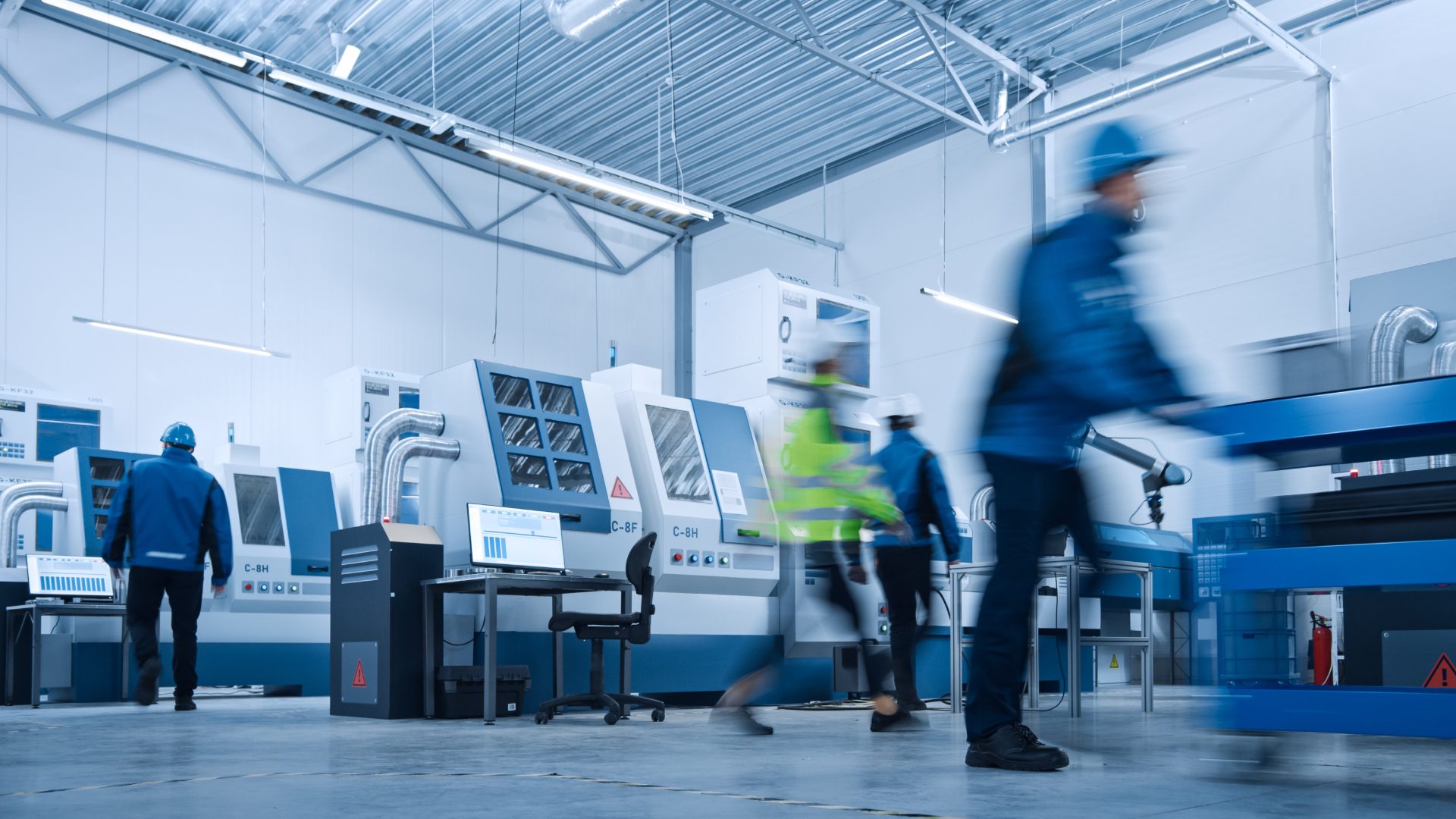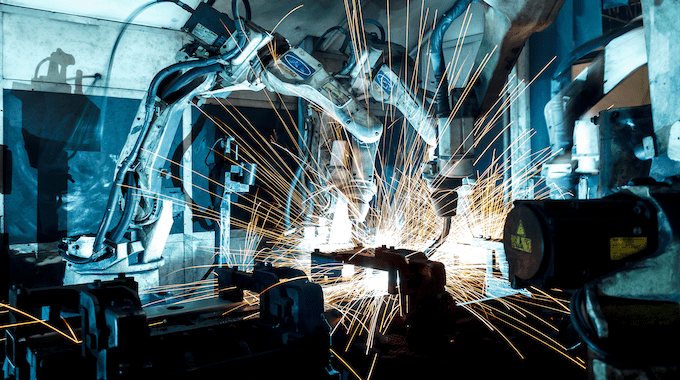- Solutions
ENTERPRISE SOLUTIONS
Infuse new product development with real-time intelligenceEnable the continuous optimization of direct materials sourcingOptimize quote responses to increase margins.DIGITAL CUSTOMER ENGAGEMENT
Drive your procurement strategy with predictive commodity forecasts.Gain visibility into design and sourcing activity on a global scale.Reach a worldwide network of electronics industry professionals.SOLUTIONS FOR
Smarter decisions start with a better BOMRethink your approach to strategic sourcingExecute powerful strategies faster than ever - Industries

Compare your last six months of component costs to market and contracted pricing.

- Platform
- Why Supplyframe
- Resources
The next generation of vehicles bears no resemblance to your grandfather’s Oldsmobile.
Innovative engineering and innovative technologies are redefining the next generation of automobiles. Automakers are harnessing artificial intelligence (AI), autonomous driving, electrification, Internet of Things (IoT), machine learning (ML), data analytics, and other technologies in vehicles being designed today.
Automakers worldwide have embraced digitization, electrification, and sustainability to improve efficiency and reduce the cost and carbon footprint of their manufacturing plants and the vehicles that roll off the assembly lines.
It is still early days in the auto industry’s shift to more environmentally responsible technologies and innovations in the manufacture of vehicles. Here are ten things the industry focuses on that will define the auto industry’s future.
On-Demand Webinat: How to Drive Success in Automotive Supply Chains
1. Artificial Intelligence (AI)
In the last few years, the automotive industry has seen a surge in AI and computer vision adoption in factories manufacturing vehicles. AI accelerates production rates and lowers manufacturing costs using robotic automation. Just as important, AI makes the automotive industry more efficient, cost-effective, and safer.
AI is also embedded in vehicles to improve passenger safety and fuel efficiency and monitor weather conditions and speed limits. Also, autonomous vehicles are equipped with AI to identify and avoid objects on the road. This advanced software allows the sensors within the vehicle to capture and process data at the edge, which enables more reactive safety features.
The benefits of this technology extend into the automotive supply chain as well. Today’s industry leaders use AI-driven demand forecasting and optimization to enable just-in-time inventory and reduce costs from unexpected shortages or overages.
2. Big Data and Analytics
Vehicle lifecycles are influenced by the data gathered from connected vehicles. Combined with data-driven technologies like digital twins, automakers can test designs thoroughly before they hit the road.
This data also enables Predictive maintenance, allowing fleet managers to monitor performance and alert authorities in case of accidents. Machine learning algorithms can also apply to consumer vehicles, allowing for intelligent alerts that could easily prevent accidents if addressed before becoming a larger issue.
Automotive customer data drives sales, optimizes supply chains, and improves product design for newer vehicles. As technology continues to capture and better utilize these forms of data, the benefits for automakers and consumers will grow in kind.
3. Human-Machine Interfaces (HMI)
HMI systems, such as voice-activated systems, allow drivers to interact with their vehicles, which makes driving safer. Smart virtual assistants help drivers and passengers interact with their vehicles and service providers.
These intelligent infotainment systems enable personalized experiences within the vehicle. Current and future AI algorithms will be able to understand and respond to voice commands, which enables the driver to perform tasks without taking their hands off the wheel.
These systems also enable more intelligent navigation with real-time traffic updates and optimized routes for drivers.
4. Internet of Things
Internet of Things (IoT) technology connects vehicles to the Internet, opening up service opportunities like predictive maintenance and timely traffic updates. Automakers use IoT technology to improve vehicle performance and enhance the driving experience.
The auto industry uses IoT extensively, especially fleet management and ride-hailing services. In addition, IoT automates payments for fuel and tolls, adding more intelligence to the vehicle. All of this is driven by the growing concepts of V2X technology, which includes Vehicle to Vehicle (V2V) and Vehicle Infrastructure Integration (VII).
Through sensors and connected devices within the vehicle, short-range communication systems can exchange data on everything from location to direction and speed. This enables several features, including but not limited to traffic updates, highway merge assistance, speed management, and priority updates for emergency vehicles.
5. Autonomous Vehicles
Machine learning (ML) and artificial intelligence (AI) are foundational elements of autonomous vehicle systems. ML vehicles are trained to learn from the data they receive and the algorithms they need to navigate the road. AI enables vehicle systems to decide how to operate without specific instructions for each situation they encounter while driving.
Self-driving or autonomous vehicles are advancing rapidly toward a connected and efficient future for AVs. They reduce the need for human drivers and provide convenience, efficiency, and safety. AI enhances computer vision and other technologies. It is used in AVs to detect obstacles on the route, which reduces the potential for accidents due to driver error or fatigue.
6. Advanced Driver Assistance Systems (ADAS)
ADAS technology includes lane departure warnings, automatic emergency braking, and adaptive cruise control. These services enhance the safety and convenience of driving as long as the roadside infrastructure is in place to utilize the features. The adoption of ADAS is driven by demand from consumers and governments for safer vehicles and more affordable ADAS technology.
In 2024 and beyond, ADAS technology will continue to benefit from integrating AI features and over-the-air (OTA) updates that can provide critical software and security updates without needing to visit a dealership. This is driven, of course, by associated technologies surrounding AI and IoT.
The growing integration of technologies within the modern automobile showcases how these disparate components are becoming more closely integrated as time passes. It also highlights the need for smarter sourcing, as many of these components are used in other industries.
7. Vehicle Electrification
Virtually all major automakers worldwide are investing in electric vehicle (EV) and autonomous driving (AD) technologies as they pivot away from the petroleum-based internal combustion engine (ICE). This shift requires new supplier ecosystems centered around battery technology and digital capabilities that improve safety and reduce carbon emissions.
Power modules, busbars, solderless automotive interconnects, electronic control unit (ECU) interfaces, sensor packaging, and many other advances are helping make new-generation EVs more efficient to build, operate and maintain.
For example, Tesla’s electric motors only have two moving parts and use single-speed “transmissions” with no gears. The company says its drivetrain has about 20 moving parts compared to 200 in conventional drivetrains. For example, the all-electric Chevrolet Bolt has 80% fewer moving parts than a comparable car with a gasoline engine.
EVs also don’t need radiators, fuel injectors, gas tanks, valvetrains, or exhaust systems. You won’t need to get an oil change, and due to the use of regenerative braking, you won’t need to change your brakes as often.
While all these differences are major benefits to consumers, the impacts on companies and workers in the auto industry are a mixed bag. EVs with simpler designs and few parts are easier to build and more conducive to automated assembly, which can help manufacturers lower costs.
Ford, General Motors, and Stellantis, all major automakers in the US, are increasing the production of EVs. However, the transition will not be quick, easy, or cheap. On the contrary, according to Reuters, EVs are not expected to reach most of the passenger vehicle market until at least 2050, and even in 2050, electric vehicles are projected to account for about 60% of new car sales.
Due to this and other factors like high-interest rates, automakers have been forced to rethink their projections around EVs. It doesn’t mean that electrification will stop, but it does signal that the pace of this evolution will slow in 2024 and beyond.
8. 3D Printing and Additive Manufacturing
3D printing provides rapid prototyping and shortens the design and testing phases in the production. Manufacturers can print spare parts quickly and easily to their exact specifications.
Additive manufacturing produces automotive parts that are lightweight, durable, lighter, and stronger than traditionally manufactured parts. Because the parts are lighter, they improve the performance of the vehicles.
All of this translates to reduced production costs. Traditional manufacturing processes often require molds or tooling, whereas 3D-printed solutions eliminate the need for these upfront costs. Reduced lead time is another advantage, as production cycles are faster when leveraging additive manufacturing solutions.
Finally, additive manufacturing also allows automakers to enable more customization and control over the intricacies of the part designs. So, how close are we to 3D-printed cars? While some prototypes have been developed, the concept is still in its early stages.
Despite this, using this technology for bespoke parts has been and will continue to be a viable option for manufacturers in the coming years.
9. Blockchain for security
Blockchain is another powerful technology that is revolutionizing the automotive industry. It provides secure, reliable data sharing and connectivity networks that support shared mobility solutions such as ride-hailing and public transportation.
Blockchain technology is set to help firms achieve supply chain integrity as it allows them to verify the authenticity of spare parts by tracking the ownership history of the components.
Blockchain also verifies the supply chain of spare parts, ensuring that only legitimate and trusted sources are utilized for raw materials and spares.
Using blockchain, the automotive industry can deliver more secure and accurate services. For example, blockchain allows supply chain companies to document production updates to a shared ledger, providing complete data visibility and a sole source of truth. Because blockchain transactions are always time-stamped and up-to-date, companies can identify a product’s status and location anytime.
This capability helps companies combat counterfeit goods, compliance violations, delays, and waste. In addition, companies can take immediate action during emergencies such as product recalls. Also, regulatory compliance is ensured by the ledger audit trail.
By combining blockchain with smart technologies such as the Internet of Things, supply chains can automate the tracking of the conditions of production, transportation, and quality control. Companies can also share track and trace data with customers to verify product authenticity and ethical supply chain practices.
10. Online Car Sales Are on The Rise
In the not-too-distant future, many car buyers will not visit physical dealerships to purchase their new car. Instead, with the ubiquitous availability of internet connectivity and e-commerce platforms, many car buyers will purchase their vehicles online.
According to McKinsey & Co., fewer than 3% of customers today purchase their vehicles exclusively online. However, 29% of new car buyers say they want to buy their next car online. Another 23% want to order online but still have contact with a dealer.
Many car manufacturers and dealerships offer online booking and purchasing options to meet this future demand. Also, online marketplaces are emerging that offer a wide range of vehicles, automotive products, spare parts, and accessories.
Intelligence For What’s Next
Innovative technologies and expanding BOMs require smarter, more environmentally conscious, and capable supply chains to match. At Supplyframe, we are paying close attention to the automotive industry’s evolution as it transitions to clean, electric-powered vehicles.
Here’s how our capabilities help chart the path forward for automakers:
- Better Decisions With Real-time Intelligence – Supplyframe’s DSI solutions provide automakers and Tier-1 suppliers with real-time visibility into component lead times, pricing, inventory, and suggestions for alternates as needed, avoiding costly redesigns.
- Optimize Collaboration Within a Single Platform – Support for multiple users, change tracking, and in-solution messaging allow teams to collaborate seamlessly on an always up-to-date BOM.
- Monitor Long-term Sourcing Trends – Access rolling quarter-on-quarter forecasts that provide reliable design, demand, and pricing insight. Pinpoint high-risk components and those reaching EOL status to address risk proactively.
Supplyframe is a key partner for manufacturers and Tier-1 suppliers in the automotive supply chain. Visit our Automotive and Transportation page today to learn more.



